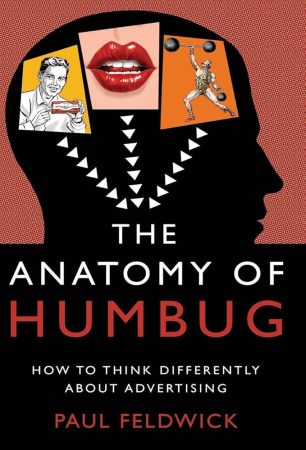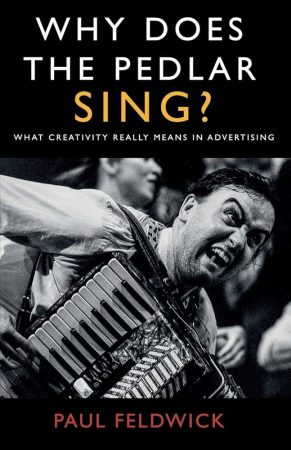I’m surprised to realise that it’s ten years since I finished writing my book, The Anatomy of Humbug ( it was published in January 2015). That seems a long time in advertising, and more broadly in a fast-changing world. So it may be a good time to reflect on the genesis of the book, and how well it still reads today. The text of Anatomy emerged (over many years) as my attempt to articulate the unspoken assumptions that underlay the way we made advertising, in the thirty years I worked at a successful agency. It seemed to me that the theories we all uncritically believed fitted rather badly with the kind of advertising we produced, and, more worryingly, with the kind of advertising that we increasingly knew worked best. We agonised over single-minded propositions and consumer benefits; then we created singing polar bears, comic Yorkshiremen, and laughing aliens, and the public loved them. Something didn’t quite make sense.
As I gradually interrogated the history of advertising thinking — a subject few seemed interested in — I noticed how, from about 1900 on, our business had been dominated by an unspoken meta-theory that I labelled as Salesmanship. Advertising was supposed to work by getting attention and communicating a rational, unique, and memorable message about the product. Sometimes this made sense. More often, on reflection, it did not.
When I started writing Anatomy, I assumed that the main alternative view to Salesmanship (conscious) was Seduction (unconscious) — the way that images, music, and evocative language created a preference without rational persuasion, often without the audience even realising what had happened. This kind of theory had got a bad press in the past, when ad agencies were excoriated as ‘Hidden Persuaders’, but that didn’t mean it wasn’t true. And according to the psychology professors whose books were fashionable in the 2010s (Damasio, LeDoux, Wilson, Schacter, etc) it seemed a much better explanation of how our minds work and how we make choices.
I originally wrote Anatomy as three lengthy lectures…
I knew when I began that the first would be about Salesmanship, the second about Seduction. And I trusted that before I had to deliver the third, something else would occur to me. Under pressure of the deadline, it became a catch-all for some other world views. I considered the Ehrenberg-Bass theory that advertising was mainly about mental availability; I looked at the history of PR, and at Watzlawick’s idea that human communication is really about relationships.
Then, almost at the last moment, something put the idea of P. T. Barnum into my head. As I read about the Great Showman, I realised there was whole world of advertising and publicity that predated that post-1900 Salesmanship school — a world of ballyhoo and showmanship, the vulgar display that Barnum himself ironically boasted of as Humbug.
Despite many wiser heads advising me not to, I eventually chose to put that word into the title of the book.
I wanted to make it very clear, however, that I did not see any of these theories or mental models as right or wrong. They were simply different ways of thinking about advertising, and the important thing was that we should be able to make choices between them as appropriate, rather than become unthinking slaves to any one of them. Sometimes one would be more appropriate than another; quite often, each of them could be a plausible way of explaining what was going on. Being able to think about advertising in different ways should open up possibilities and legitimise more options, rather than close them down.
My intentions in writing Anatomy were about the future, but its actual content is mainly about the past — as a result, I like to think the book has dated very little. Nor is there much in it that I would actively disagree with today, though my thinking has continued to move on. In my later book, Why Does the Pedlar Sing? I developed in much more detail the idea of Showmanship and its connection to the central theme of Fame, linking the world of Barnum more explicitly to the Ehrenberg-Bass theory of mental availability and ‘creative publicity’. I elaborated the connections and the similarities between brands and celebrities, and explored the fascinating history of how the agency business came to disown Barnum and celebrate rational Salesmanship, in its 20th-century quest for respectability and professional distance from the vulgar world of entertainment. But all this is, at most, a shift of emphasis rather than a change of worldview.
One thing I do notice today is a great deal more talk about the importance of fame, showmanship, and popularity in advertising, than I think there was ten years ago. The more these ideas become accepted currency, the better I believe it will be for the advertising business — so it would ill become me to claim any proprietorial interest in them. But I would like to think that my two books have contributed something to this shift, if that is indeed what’s happening, and that people will continue to find them both worth reading for some years yet.
































